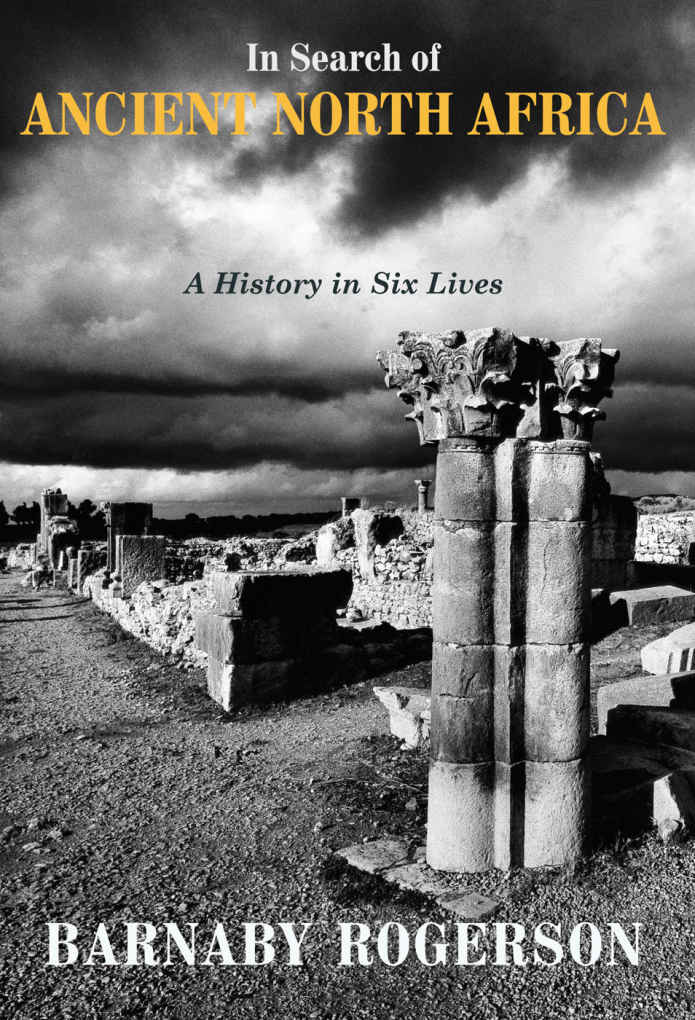
Scholars of the classical world tend to focus on events on the Northern side of the Mediterranean – and rightly so as this is where Rome and Athens were located. However, this is also because the Arab conquests beginning of the 7th century A.D. have unfortunately served to obscure the contributions of those born on the other Mediterranean shore to Western civilization.
Barnaby Rogerson is an accomplished historian who has published books on topics ranging from the crusades to previous works on the history of North Africa. Here he sets out to brush away the sands of time and take a closer look at some of those North African figures. His 40 years of travel and research in North Africa have allowed him the opportunity to offer new portraits of six ancient figures — with glimpses of others. The book is a part travel guide to some of North Africa’s most important ancient ruins and part biographical anthology. The book was first published in 2017; however, a new paperback edition will be released this fall.
The first figure profiled in this anthology is Dido who was the founder and first Queen of Carthage (though her name may also have been Elisa). Her fame is eclipsed by Carthage’s most famous son – Hannibal Barcid. Hannibal along with Massina (a Carthaginian warlord) are both profiled in the book. The lives of all three are examined through the ruins of Carthage by Rogerson, of which little remains today after its sacking at the end of the Third Punic War, though a few sites still remain like the bizarre and narrow oval-shaped lagoon that was once the harbour for the Carthaginian fleet.
Though not mentioned by Rogerson, any visit to this site is not complete without a visit to the nearby Café des Nattes where everyone from Vice President Richard Nixon to pied-noir writer Albert Camus has taken in the view across the wide bay toward the mountains of Cap Bon, a view that in the evenings remains largely unchanged since Hannibal’s time. Hannibal was arguably the greatest military commander of all time and is a favorite of scholars.
Yet, using his knowledge of North African geography Rogerson is able to coax out a novel idea about Hannibal’s ultimate defeat at the battle of Zama in 202 B.C. when Hannibal was defeated by the Roman commander Scipio Africanus. Hannibal’s fate in this battel, Barnaby argues, may have hinged on a contingent of Numidian cavalry in the employment of Rome. Numidia was a Berber kingdom located to the West of modern Carthage which had long supported Carthage; but, switched sides to support Scipio’s invasion. Hannibal may have been lured into the battle of Zama on the belief that Massina’s Numidian cavalry would switch sides yet again Rogerson suggests.
Not everyone of course in the book is famous for his martial accomplishments. Juba II was less of a military man;s but, rather his loyalty to the Roman Emperor Octavian (later Augustus) ensured he would be handed the rule of a minor Roman kingdom and the hand of Cleopatra Selene — the daughter of that Cleopatra and her lover Marc Anthony. Juba II funded the expedition which discovered the Canary Islands — which earned their name due to the large and ferocious dogs the explorers encountered there. The Roman Emperor Septimius Severus, born in Leptis Magna, is also profiled in this book. The ruins of which are impressive; but, given the ongoing Civil War in Libya – rarely visited today.
The most in-depth portrait in the book is that of St. Augustine, whose place in the book reminds us how much Christianity owes to Africa. St. Augustine was born in a town in northern Algeria, a town too cold for date palms or camels. It was also here that he wrote his famous City of God. Three early Popes were from North Africa — The Pope Victor I (189-199 AD), Pope Miltiades (311-314AD) and Pope Gelasius I (492-496 A.D.). The three of them were all Berbers an ethnic mix from which as much as 75% of modern Algeria’s population traces its ethnic heritage. The 18th-century historian Edward Gibbon wrote of St. Augustine that he possessed “ a strong and capacious, argumentative mind….His learning often borrowed, his arguments his own.” Much the same could be said of the author of this highly readable book which serves as a worthy introduction to an understudied topic.
- Book Review: “Russian Nuclear Orthodoxy: Religion, Politics and Strategy”, How Much Did Orthodox Church Help Revive Russia’s Military and Nuclear Complex?
- Book Review: The Worlds Most Dangerous Place: Inside The Outlaw State Of Somalia

